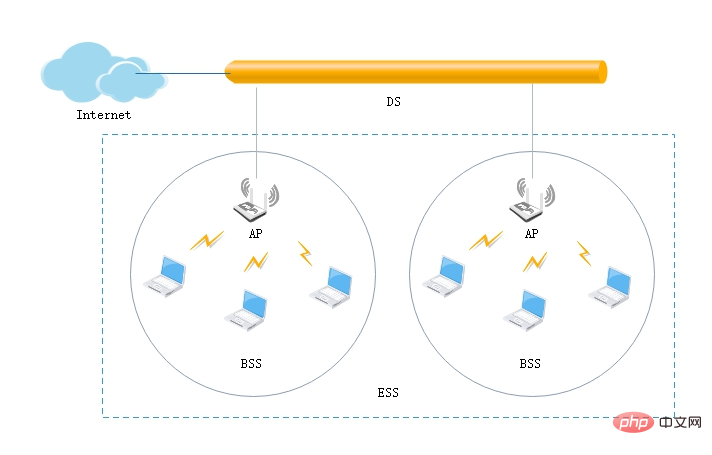Home >Common Problem >What network does lan refer to?
What network does lan refer to?
- 青灯夜游Original
- 2023-03-01 16:22:5029161browse
lan refers to a local area network, which is a regional network formed in a local area. Its characteristic is that the distribution area is limited, which can be large or small, ranging from the connection between a building and an adjacent building to as small as It can be a link between offices. Local area networks (LANs) are widely used to connect personal computers and consumer electronic devices, allowing them to share resources and exchange information. The local area network itself is roughly composed of three major parts: computer equipment, network connection equipment, and network transmission media.

The operating environment of this tutorial: Windows 7 system, Dell G3 computer.
LAN is the abbreviation of Local Area Network, that is, local area network.
Local Area Network (LAN) is a regional network formed in a local area. Its characteristic is that the distribution area is limited, which can be large or small, as large as the connection between a building and adjacent buildings. Small enough to be a link between offices.
A LAN is a private network, typically within or near a building, such as a home, office, or factory. Local area networks are widely used to connect personal computers and consumer electronic devices, allowing them to share resources and exchange information. When LANs are used in companies, they are called enterprise networks.

Compared with other networks, the LAN itself has faster transmission speed, more stable performance, simple framework, and closed nature, which is why many organizations choose it.
The local area network itself is generally composed of three major parts: computer equipment, network connection equipment, and network transmission media. Among them, computer equipment includes servers and workstations, and network connection equipment includes network cards, hubs, switches, and networks. The transmission medium is simply a network cable, which is composed of three major components: coaxial cable, twisted pair and optical cable.
A local area network connects various computers, external devices and databases in a certain area to form a computer communication network, and connects to local area networks or databases in other places through dedicated data lines to form a larger information processing system.
LAN connects network servers, network workstations, printers and other network interconnection devices through network transmission media to realize system management files, share application software, office equipment, send work schedules and other communication services.
The LAN is a closed network, which can prevent information leakage and external network virus attacks to a certain extent, and has high security. However, once an incident such as a hacker attack occurs, it is very likely to cause the entire LAN to be paralyzed. All work within the network cannot be carried out, and a large number of company secrets may even be leaked, causing serious damage to the company's business development.
Characteristics of local area networks
Local area networks are generally owned by a department or unit. They are easier to build, maintain and expand, and have high system flexibility. . Its main characteristics are:
covers a small geographical range and is only connected within a relatively independent local range, such as one or a concentrated building group.
Use specially laid transmission media for networking, with high data transmission rate (10Mb/s~10Gb/s)
Short communication delay time , high reliability
LAN can support a variety of transmission media
For more related knowledge, please visitFAQcolumn!
The above is the detailed content of What network does lan refer to?. For more information, please follow other related articles on the PHP Chinese website!

